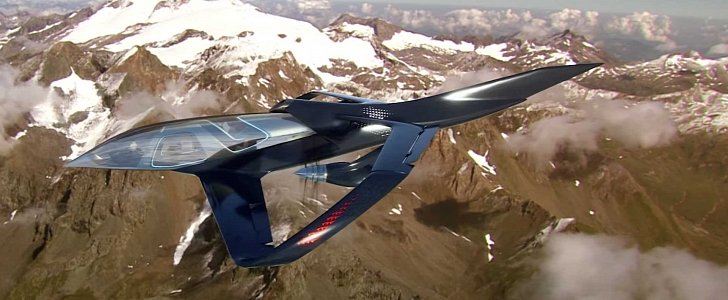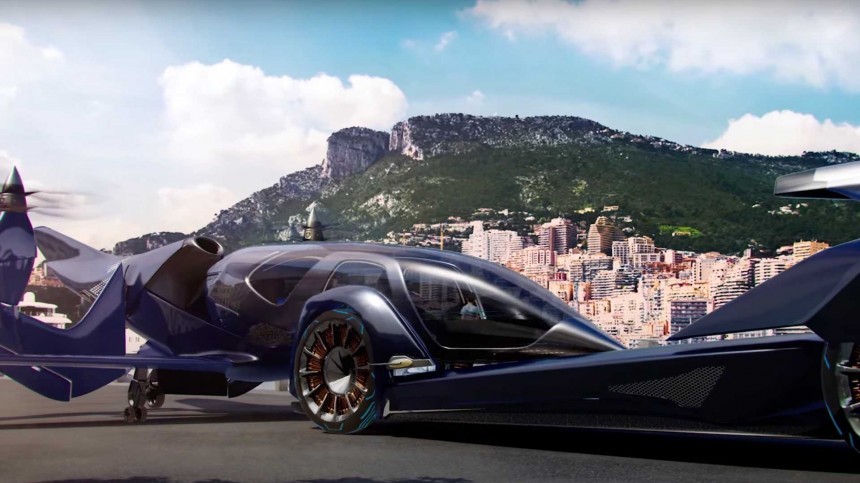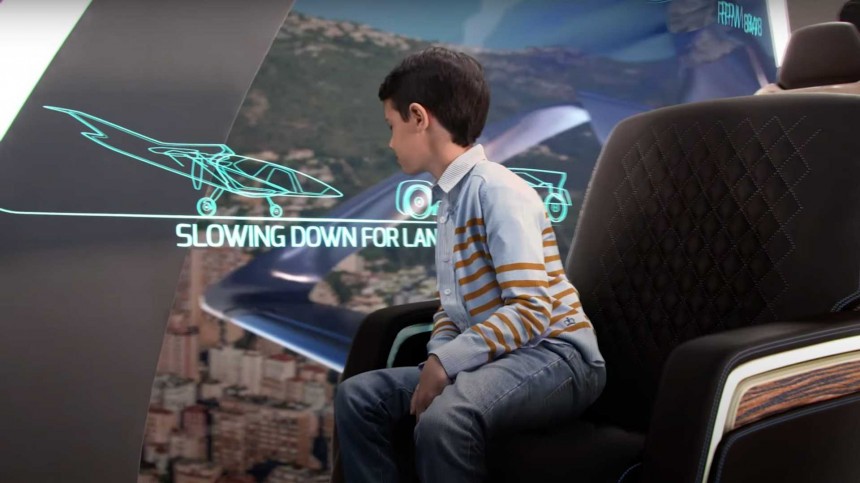The future of flying taxis is not just more time-efficient and emissions-free: it could also be incredibly more versatile. Think of long-distance travel on both ground and in the air, without passengers having to leave the cabin once.
This is the future that Brazilian company Embraer imagines.
Embraer has been making military, commercial, agricultural and executive aircraft for years, and as of 2018, it’s been also developing an eVTOL aircraft, the EmbraerX. To mark the company’s 50th anniversary, it developed a concept that shows the direction it would like to take in next 50 years.
This is how Embraer Pulse came to be, a revolutionary and versatile take on executive aircraft. Pulse would be more than just an eVTOL, though. It’s actually a smart cabin that can attach both to the autonomous eVTOL and to an autonomous automobile chassis, so passengers make the entire journey to their destination without once stepping outside the cabin.
Flying taxis are definitely the future or urban mobility, but they do pose the problem of securing transport to and from the skyports where they take off and land. Take the example of a daily commute: in order to get to the flying taxi, you would first have to hitch a ride with Uber or a similar service (assuming you’re looking to ditch your personal vehicle). To go back and forth, this means 2 rides by land and 2 rides by air on a daily basis.
Embraer Pulse would make matters easier by removing the need for transport on land, functioning as a fully door-to-door service. The rider summons the ride on the app and a driverless vehicle shows up at his door. He gets inside and is ferried to the skyport, where the cabin detaches itself from the vehicle and latches onto a waiting eVTOL. The process is repeated in reverse once the flying taxi lands.
The design is inspired by the Buick Y-Job, the first-ever concept car, designed by Harley Earl in 1938, and flight romanticism of the 1950s. With Embraer imagining it in the year 2070, it has a certain space-age edge to it, while making full use of its bird-like abilities in flight.
The cabin is made from glass and transparent metal alloy, and acts as a smart interface for passengers to interact with the world – and each other. It can offer 360-degree views while zooming at maximum speeds in the air or down the highway, or can be tinted to enjoy streamed content.
“The fuselage is particularly interesting,” Jay Beever, vice president of interior design for Embraer Executive Jets, tells The Robb Report in a recent interview. “The pod structure is made of transparent aluminum, otherwise known as Alon. Though this material is classified and currently being considered for use by NASA and other governmental anti-ballistic projects, I think it would make a fantastic fuselage material.”
Inside the pod, there would be ample space for several passengers, as shown in the video available at the bottom of the page. Because there would be no command center and everything would be touch-activated, the extra space could be used to conduct business meetings or just hang out with friends / family. There’s even space for a playroom / study room for the kids in the back, but since this is thought of as the future of executive aircraft, chances are the kids will be left at home with the nannies, educators or other caretakers.
The Pulse is only a concept now, and there’s no telling whether we’ll ever see something like this by 2070 – or at all.
At the same time, it’s an exercise of the imagination into future transport technology, which strives to show the benefits of merging two separate vehicles into one. Moreover, Beever imagines a humanitarian evolution of the concept, with drone-fighting equipment attached instead of the smart cabin to the driverless chassis, now stretched out for maximum efficiency.
It never hurts to dream a little, does it?
Embraer has been making military, commercial, agricultural and executive aircraft for years, and as of 2018, it’s been also developing an eVTOL aircraft, the EmbraerX. To mark the company’s 50th anniversary, it developed a concept that shows the direction it would like to take in next 50 years.
This is how Embraer Pulse came to be, a revolutionary and versatile take on executive aircraft. Pulse would be more than just an eVTOL, though. It’s actually a smart cabin that can attach both to the autonomous eVTOL and to an autonomous automobile chassis, so passengers make the entire journey to their destination without once stepping outside the cabin.
Flying taxis are definitely the future or urban mobility, but they do pose the problem of securing transport to and from the skyports where they take off and land. Take the example of a daily commute: in order to get to the flying taxi, you would first have to hitch a ride with Uber or a similar service (assuming you’re looking to ditch your personal vehicle). To go back and forth, this means 2 rides by land and 2 rides by air on a daily basis.
Embraer Pulse would make matters easier by removing the need for transport on land, functioning as a fully door-to-door service. The rider summons the ride on the app and a driverless vehicle shows up at his door. He gets inside and is ferried to the skyport, where the cabin detaches itself from the vehicle and latches onto a waiting eVTOL. The process is repeated in reverse once the flying taxi lands.
The cabin is made from glass and transparent metal alloy, and acts as a smart interface for passengers to interact with the world – and each other. It can offer 360-degree views while zooming at maximum speeds in the air or down the highway, or can be tinted to enjoy streamed content.
“The fuselage is particularly interesting,” Jay Beever, vice president of interior design for Embraer Executive Jets, tells The Robb Report in a recent interview. “The pod structure is made of transparent aluminum, otherwise known as Alon. Though this material is classified and currently being considered for use by NASA and other governmental anti-ballistic projects, I think it would make a fantastic fuselage material.”
The Pulse is only a concept now, and there’s no telling whether we’ll ever see something like this by 2070 – or at all.
At the same time, it’s an exercise of the imagination into future transport technology, which strives to show the benefits of merging two separate vehicles into one. Moreover, Beever imagines a humanitarian evolution of the concept, with drone-fighting equipment attached instead of the smart cabin to the driverless chassis, now stretched out for maximum efficiency.
It never hurts to dream a little, does it?














